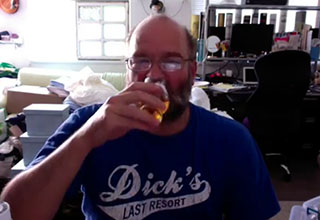This Place is For the Birds Literally!
Like George Daynor’s Palace Depression in Vineland, The Birdsville Church of South Toms River was built by Albert P. Greim with his own two hands, and no set plans as to what it would look like when completed.
A builder of bird houses, Greim established a woodworking shop in Cedar Brook, near Camden, but moved to Toms River in 1914 because of the better quality cedar needed for constructing his bird houses. He moved into a wooden cabin, and with the money he made from his craftwork, began construction of what the local population would dub “Greim’s Dream.”
The Moorish-looking structure began with Greim making molds and pouring concrete to form his first room, the “cathedral.” Using ornamental and hand-painted religious tiles, he began to build his church as a sanctuary for humans, but mainly for birds, who he had a great affection for. He had amassed a great wealth of bird lore from personal observation and the many books that he had read. He also constructed many bird houses and baths on the property for his feathered friends, along with garden rows and flowers.
Subsequently more rooms, domes and vaulted archways were added to the strange temple. Oriental rugs were hung, and large concrete candelabras were placed alongside the altar. Greim, who was Episcopalian, and a “high churchman,” placed
Although Greim built his dream for sanctuary, he also lived in this concrete shelter. The building had a kitchen and bedroom off the main chapel. Not being an engineer, his one great mistake was finding out that a concrete home could not be properly heated. The roofs (also poured concrete) had to be taken down and insulated.
Greim planned on building another 14 rooms to his church. The additions were to have been three stories tall, with set back balconies. He said he wanted it to look futuristic, in the manner of the Century of Progress structures, but in harmony with what he had already constructed.
Greim died on April 27, 1930 before he could see his dream completed. Never being married, the property and his entire holdings were given to a local resident, Stanley Grover, who often assisted Greim with work around the church. Changing hands over the years, the church had become a sewing machine shop and electrical repair store. Today it is all but in ruins, a mere shell of what was once a quiet, but odd retreat for a religious bird lovercrucifixes, figures of the Madonna and wooden figures of Christ all around his concrete shrine. Above the doorway to the chapel, in tile is the name “Oratory Bethlehem.” He even had a pipe organ installed and two pews. The church became fully sanctioned in the 1920s, and seven couples had taken their marriage vows before the altar.





1 Comments